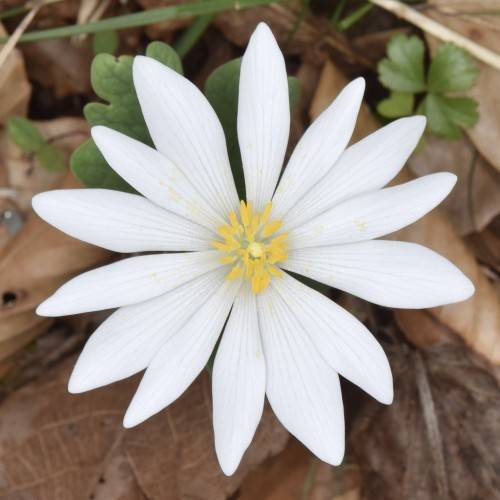
bloodroot
Sanguinaria canadensis
Cycle:
Herbaceous Perennial
Watering:
Average
Hardiness Zone:
3 - 8
Flowers:
Flowers
Sun:
Partial sun Shade
Soil:
Loamy Humus
Fruits:
Fruits Ready In Fall
Leaf:
Yes
Growth Rate:
Low
Maintenance:
Moderate
Poisonous To Humans:
Yes
Poisonous To Pets:
Yes
Care Level:
Medium
watering
Bloodroot should be watered regularly, but avoid over-watering. During the growing season (Spring to Fall), water thoroughly once per week in order to ensure the soil remains slightly moist, but not soggy. During the Winter months, reduce watering to once every 2 weeks. Bloodroot prefers moist soil and does not like to dry out. In general, the top few inches of soil should be checked before watering and should remain moist but not wet.
sunlight
Bloodroot (Sanguinaria canadensis) prefers bright, indirect sunlight throughout the day. It needs at least 4 hours of direct sunlight each day — more is better. However, it should never be exposed to direct sunlight during the hottest part of the day, as the intense sunlight can damage the leaves and cause them to dry out or even burn. Instead, plant your bloodroot in a spot that receives morning sunlight, or slightly filtered sunlight throughout the day.
pruning
Bloodroot is a unique plant species, and as such, requires careful pruning in order to flourish. Generally, it should be pruned in the early Spring before new growth begins. Pruning should be light, removing only the dead and damaged branches, while also encouraging plant health and stimulating further growth. The aim should be to promote healthy stems and plenty of flowers. A layer of compost can be added after pruning to maintain soil fertility. Pruning should be done every 2 to 3 years to achieve the best results. Additionally, new plants should not be over-pruned in order to provide the best possible environment for growth.
